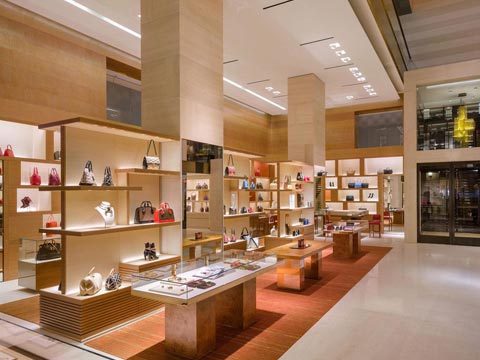Unfolding India’s Luxury Market in 2018
Today, the luxury market in India garners huge attention as most of the global luxury brands have already arrived or are expected to enter. Luxury retailers have realized that India is one of the world’s most vibrant, diverse and challenging markets for brands that want to capture this market. Success of luxury brands is mainly determined by their ability to understand the complexities of Indian market, to innovate and tweak their strategies to provide affluent consumers unique and bespoke brand experience. India is a distinctive and multifaceted market and reveals a pot-pourri of cultures, customs, and history. Chadha and Husband in their book on ‘Cult of Luxury Brands: Inside Asia’s Love Affair with Luxury’ described that “each country has its own endearing eccentricities that make it unique”. Luxury retailers need to understand following five unique key characteristics to serve Indian market well.
Evolving Indian market
India is still in nascent stage of its development as a luxury retail market. There have been up and down trends in last 10 years in luxury sector. Because of these variations, it’s getting very complicated to precisely judge and gauge the luxury market. While India is visualized as an upcoming market as there is lot of potential, there are also people who believe that the potential of Indian market has been overrated. However, positive thing is size of the market, which, in itself makes it very exciting for people to sit in long term. The top-selling items in the luxury market are watches, automobile, real estate, fashion accessories, handbags, super premium beauty/personal care products, luxury electronic gadgets, shoes and apparel.
Regulations
Since November 2016 there has been introduction of several cash related restrictions which made an impact on luxury sector- first demonetization, then the 2 lakh limit, after that PAN Card business and the last of them was the GST implementation. Though these policies have initially obstructed the growth of Indian luxury sector but it is believed that these changes may be favourable in the long term. Recently, government has approved 100% FDI under the automatic route for single-brand retail trading and also eased the mandatory local sourcing norms. This would provide greater flexibility to the global retail brands and increased consumer access to global brands.
Diverse characteristics of Indian consumer
Indian consumers are very different from a consumer in China or the West. Indians culturally are value conscious and always look for a good bargain. People always seek value and search for information regarding at what price they can get brands internationally. As import duty is very high, consumers often find it cheaper to purchase from Singapore, Dubai or London. Consumers are ready to experiment; they have become bold. It’s not conventional pattern of buying anymore. People are ready to experiment with colours, styling, irrespective of age. Consumers are brand conscious and logo-centric and logo has to be shown well. For men, shoes with prominent logo sell more in India. Women shoes do not sell well because they don’t see value. However, women buy sunglasses and handbags which are more visible. People like to show-off. Indian buyers give a huge importance to perception and value. Quality and craftsmanship is a selling point but not decider point for Indians, it is prestige that people associate with brand that they are paying for and therefore more than anything else it is perception of the brand in the country that is either making a brand successful or is creating struggle.
Great demand for affordable luxury brands
Affordable luxury brands like Michael Kors, Kate Spade, Coach and Charles & Keith have been successful in capturing the hearts of young aspirational Indian buyers. These international brands give an option to the brand-conscious Indian shoppers to buy status symbols at a much lower prices than the average luxury brand. According to Euromonitor International, this segment is rapidly growing at the rate of 40% per annum, outpacing rest of the segments.
Luxury space constraint
Real estate is heavily regulated in India; consequently luxury brands generally launch stores in luxury malls or hotels, through joint ventures with local distributors. Presently, there are very few luxury malls in India which cater to luxury brands. In India, luxury retailing is confined to the three metro cities- Mumbai, Delhi and Bangalore. Tier 2 and 3 cities, with large populations and growing wealth are not catered too well. But retailers have to realize that it is not only metros where people have money or purchasing power, even small cities clients also generate revenues. There is no high street for luxury brands in India. All existing high streets are very cluttered and over-crowded and hence, do not provide a suitable ambience that luxury retail demands. In addition, the cost of setting up luxury stores in high streets is very high which dissuade the retailers to open stores in such areas.
Luxury players need to understand that Indian market has some distinct characteristics and in such an environment they have to operate very cautiously and selectively to create value for Indian consumers. Failure to recognize these variations in terms of their levels of luxury addiction, and consumer attitudes for luxury brands can detach retailers to understand consumer behaviour of luxury buyers.
(This article has also been published in Business Today on 24 Feb, 2018).
